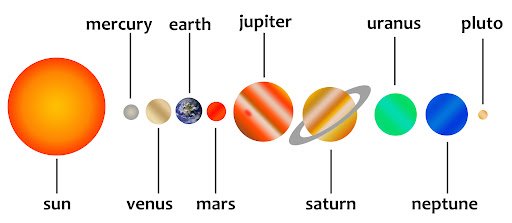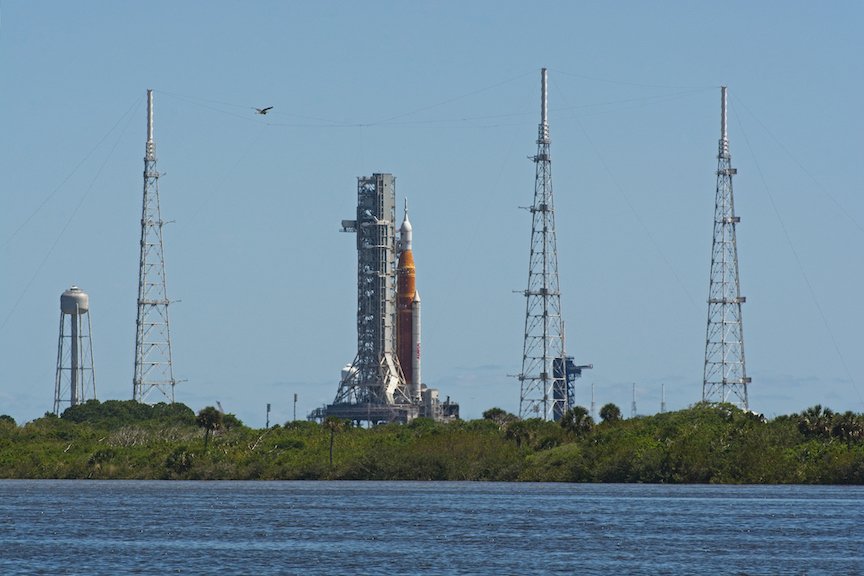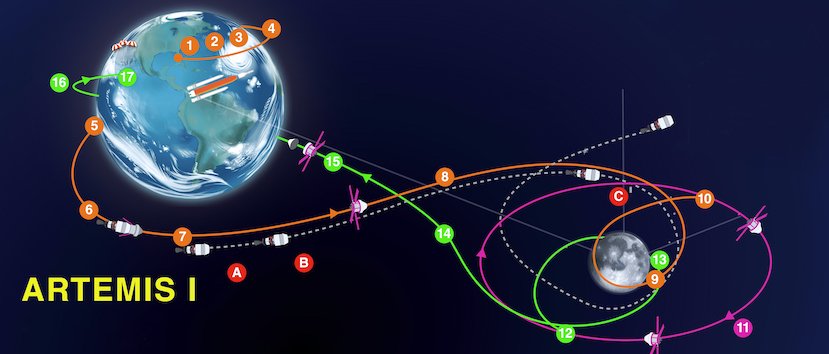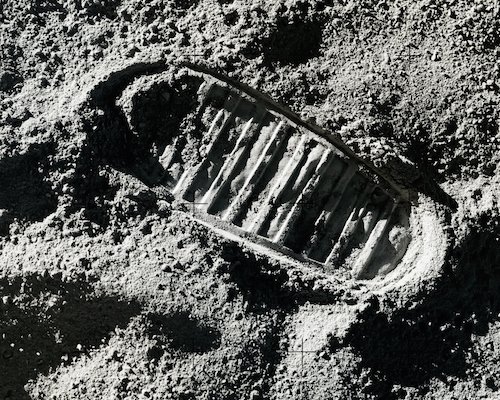In 1969 the first human walked on the moon.
Soon astronauts will go to the moon again.
This time they will stay for a few days and then come home.
This is a test to see if people can go to Mars and back.
A Mars trip could happen in about 10 years.
The Artemis Program
The Artemis Program is an ambitious longterm project by NASA with the eventual intention of landing humans on Mars. Robots have already been landed on Mars and have sent back important data that will enable astronauts to be sent there in the 2030s. The moon will be the training and testing ground for the equipment, systems and safety for humans to be able to live, work and return safely.

The planets in order from the sun. Mars is known as ‘the red planet’. ©Getty
Living and working on the moon is a test to help prepare NASA in the achievement of its main goal, a mission to Mars. It will take 7-8 months to reach Mars, and the return journey must wait for about 15 months for the planets to line up correctly for the journey to be made. On the moon other things will be tested, such as how astronauts can gather materials from the moon and perhaps make fuel.

Artemis 1 on the launchpad at Cape Kennedy in Florida, preparing for take off. However the launch was cancelled due to technical problems, and then delayed further due to two severe hurricanes. The successful launch eventually happened shortly after midnight on 16 November 2022. ©iStock
The Artemis Program has three parts.
Part 1 has just begun, with the successful launch on 16 November 2022 of Artemis 1, a mission without a crew that will test the performance and safety of NASA’s new rocket, the Space Launch System (SLS) and the Orion Space capsule, which is larger than that of the Apollo moon missions.
The SLS is a 98 m (322 ft) tall that consists of a core stage, upper stage and twin solid rocket boosters to launch the total load, the payload, into space. The payload will eventually include astronauts, contained in the Orion space capsule designed to carry four astronauts on missions to the moon.
The first mission will test the safety of the SLS rocket, and the Orion capsule's ability to reach the moon, perform lunar orbit and return to Earth for an ocean splashdown. The SLS rocket will carry 13 small satellites into space to perform experiments and technology demonstrations. For six days the craft will orbit the moon, collecting performance data.

The Artemis 1 mission map. ©iStock
Part 2
In 2024 Artemis 2 SLS rocket will carry the first four Artemis astronauts in the Orion capsule on a mission that will probably be for 10 days. The crew will complete a lunar flyby and return to Earth. The spacecraft’s systems and safety while carrying humans will be evaluated.
Part 3
In 2025 Artemis 3 will carry astronauts in the Orion capsule that will land them on the moon’s surface. It is expected that one of the astronauts will be the first woman to land on the moon. This mission’s activity will be based on the success of previous missions, but it is intended that a lunar lander will lower two people to the moon’s south pole area. They will remain on the moon for about a week.
Why the name Artemis?
The first moon missions were called Apollo after an important god of Ancient Greece. His twin sister was the goddess Artemis, so it is very appropriate the the latest moon missions are named after her.
History: the first moon missions
NASA made six Apollo missions to the moon between 1969 and 1972, during which time a total of 12 people walked on the surface of the moon. At that time there were no female astronauts, because the most experienced astronauts were men. Now there are women astronauts in the space programs, about 75 of whom have been to space. The first person to land on the moon’s surface was Neil Armstrong.

The first human footprint on the moon’s surface, made by Neil Armstrong in 1969. He said “One small step for man, one giant leap for mankind.” Image©Getty
It’s a good idea to get information from more than one source!
Watch a NASA video showing how all the systems work, how they will get astronauts to the moon, and why this is a practice for a journey to Mars.
https://thekidshouldseethis.com/post/artemis-nasa-going-to-the-moon
Read more about Artemis 1
https://www.nasa.gov/audience/forstudents/k-4/stories/nasa-knows/what-is-the-artemis-program-k4.html
https://www.esa.int/kids/en/news/Artemis_I_mission_sets_its_sights_on_the_Moon

